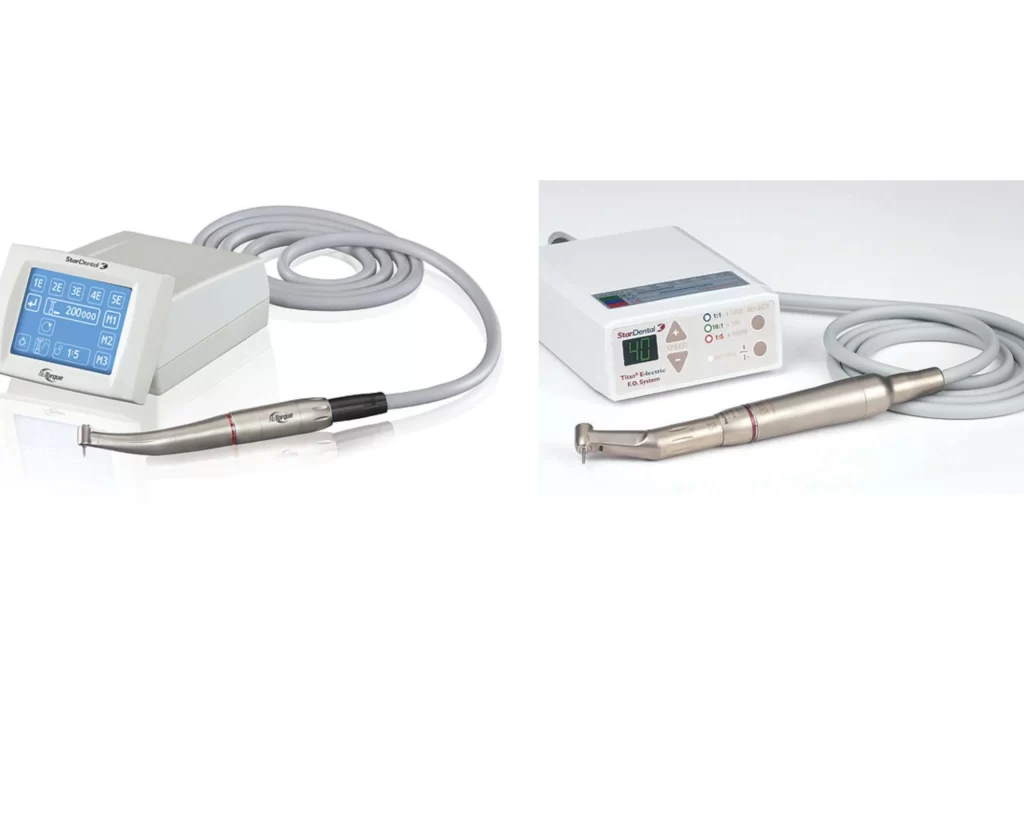
Dental professionals employ electric handpieces as a necessary tool for a variety of treatments. Electric handpieces, in contrast to conventional air-driven handpieces, use an electric motor to drive their spinning. Many benefits are offered by this technology, including improved precision and control, decreased noise and vibration, and enhanced torque for swifter and more fluid cutting. Moreover, electric handpieces provide greater adaptability, enabling dentists to carry out a variety of procedures, from implant insertion to restorative work. The electric dental handpiece provides a personalized experience with the flexibility to change the speed and torque, which can enhance the standard of care and patient comfort. Electric handpieces are positioned to become more significant in the realm of dentistry as technology develops. Read on the Welch Allyn Audiometer.
What is an electric dental handpiece?
An electric dental handpiece is a dentistry device that rotates under the control of an electric engine and is used for a range of dental procedures including cutting, grinding, polishing, and drilling. It is a handheld tool that is attached to a dental chair and allows dentists to perform the procedures I listed above. It can also be used to remove decaying tooth for dental composite.
What is the principle of the Electric Dental Handpiece- How does it work?
An electric dental handpiece is a device that uses an electric motor to create rotational power during a range of dental procedures. It is a lightweight instrument that can be attached to a dental chair and gives dentists greater control, accuracy, and adaptability when doing tasks like drilling, grinding, polishing, and cutting. Dental laser cleaning is another procedure for oral hygiene.
The dentist can modify the electric handpiece’s torque as well as speed depending on the particular operation being carried out. Dentists can carry out operations with better preciseness and effectiveness thanks to this adjustability’s maximum control and efficiency. Moreover, the electric motor produces less noise and vibration, making the dental procedure more comfortable for both the doctor and the patient. Take a look at the history of microtomes.
Types of Electric Dental Handpieces
- High-speed handpiece- It is used for drilling and cutting hard tissues like enamel and dentin.
- Low-speed handpiece- It is used for smoothing and shaping fillings like composites and ceramics.
- Endodontic handpiece- It comes with unique head and torque settings to handle delicate and accurate Such as root canal operations.
- Surgical handpiece– It is a tool used in oral surgery that has specific head and torque settings for tasks including implant implantation and bone surgery. Take a look at dental curing lights.
General Parts of an Electric Dental Handpiece
- Control panel- It allows the dentist to regulate the speed and torque of the handpiece.
- Motor– It is the power source; the motor creates the rotational force needed to move the bur.
- Transmission- It transmits the rotational force from the motor to the bur.
- Bur Chuck- It is a device that retains the bur firmly in place and makes bur swaps quick and simple.
- Control circuit– It controls the torque and speed of the sped and torque for an accurate procedure.
- Cooling system– It was created to avoid overheating and also prevent the tooth from being damaged by heat. It usually comprises a ventilation system for removing extra heat and a water mist system to cool the bur.
- Housing- It is the outer casing of the electric dental handpiece, which protects its internal workings and gives the user a secure grasp.
- Power cord– It is plugged into a power source to drive the device.
Good Maintenance of Electric Handpiece
- Cleaning and lubrication- Use the appropriate lubricant and detergents to maintain the moving parts and clean the handpiece respectively to avoid a breakdown of the device.
- Sterilization- Disinfect the electric handpiece with the right concentration of the disinfecting agent. Moreover, you can use the right wavelength of IV light to sterilize the device and prevent cross-contamination. Take a look at dental composite glue.
- Check for physical damage- Examine the electric dental handpiece on a regular basis to see if there is any problem such as an exposed wire, a faulty motor, rust, or a crack in it. Change it immediately to avoid any accident on the patient.
- Store appropriately- Keep the device in a cool, dry dust free area devoid of extreme temperature to prevent damaging it. It can also n kept in a hood or the box after each use.
- Regular maintenance and repairs- To make sure the handpiece is operating properly and to head off possible problems, schedule routine maintenance and repairs with a competent technician.
- Utilize only high-quality burs- Before using, make sure that the burs are fitted correctly and tightened. Do not forget to read about the microscope slide scanner.
Conclusion
The way dental treatments are carried out has been transformed by electric dental handpieces. As a comparison to conventional air-driven handpieces, they provide higher precision, speed, and torque, leading to quicker, more effective treatments with less discomfort for the patients. Moreover, electric handpieces contain a range of features and attachments that may be adapted for particular treatments, enabling dentists to deliver a more personalized and successful treatment. Nonetheless, regular maintenance and care are necessary to guarantee optimum performance and longevity. Dental professionals can continue to benefit from this cutting-edge technology and offer their patients high-quality care by according to the manufacturer’s recommendations and routinely inspecting and maintaining the handpiece. Have you heard of the Video Otoscope?